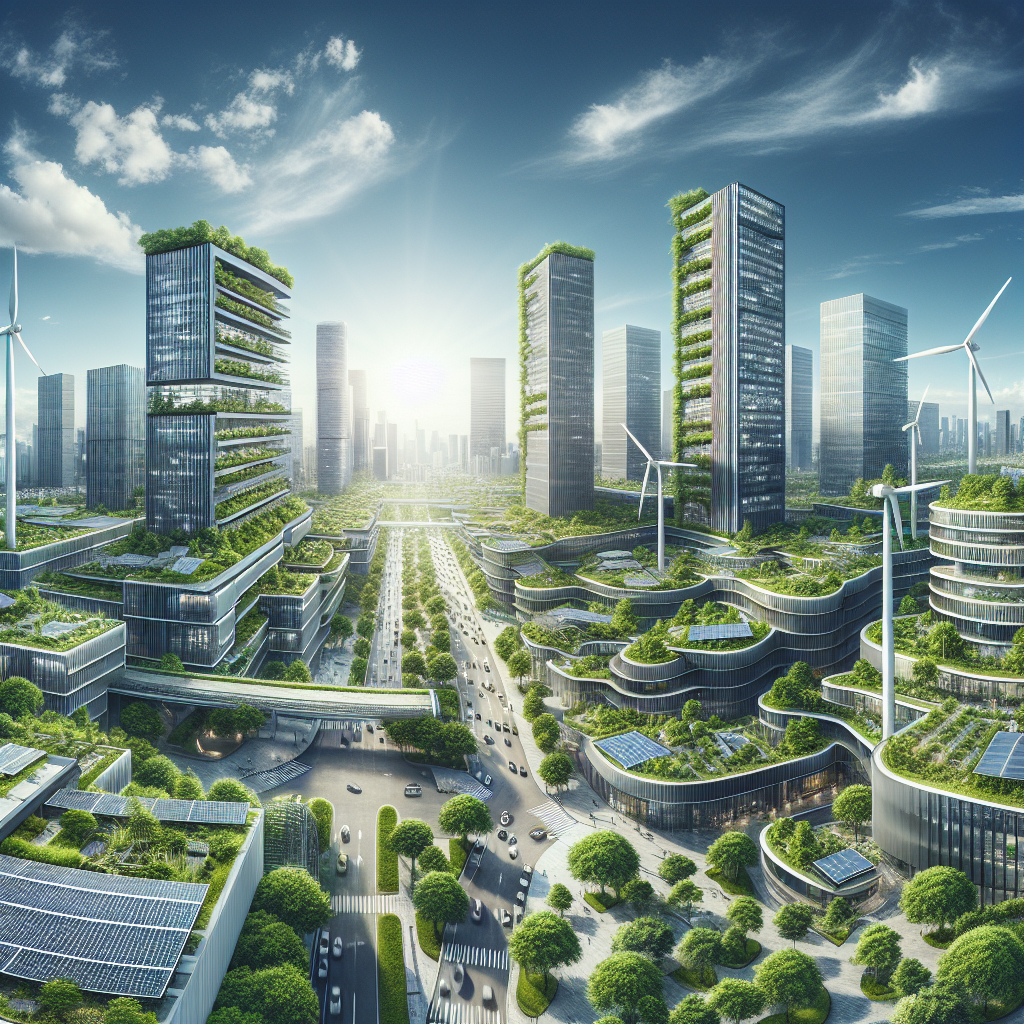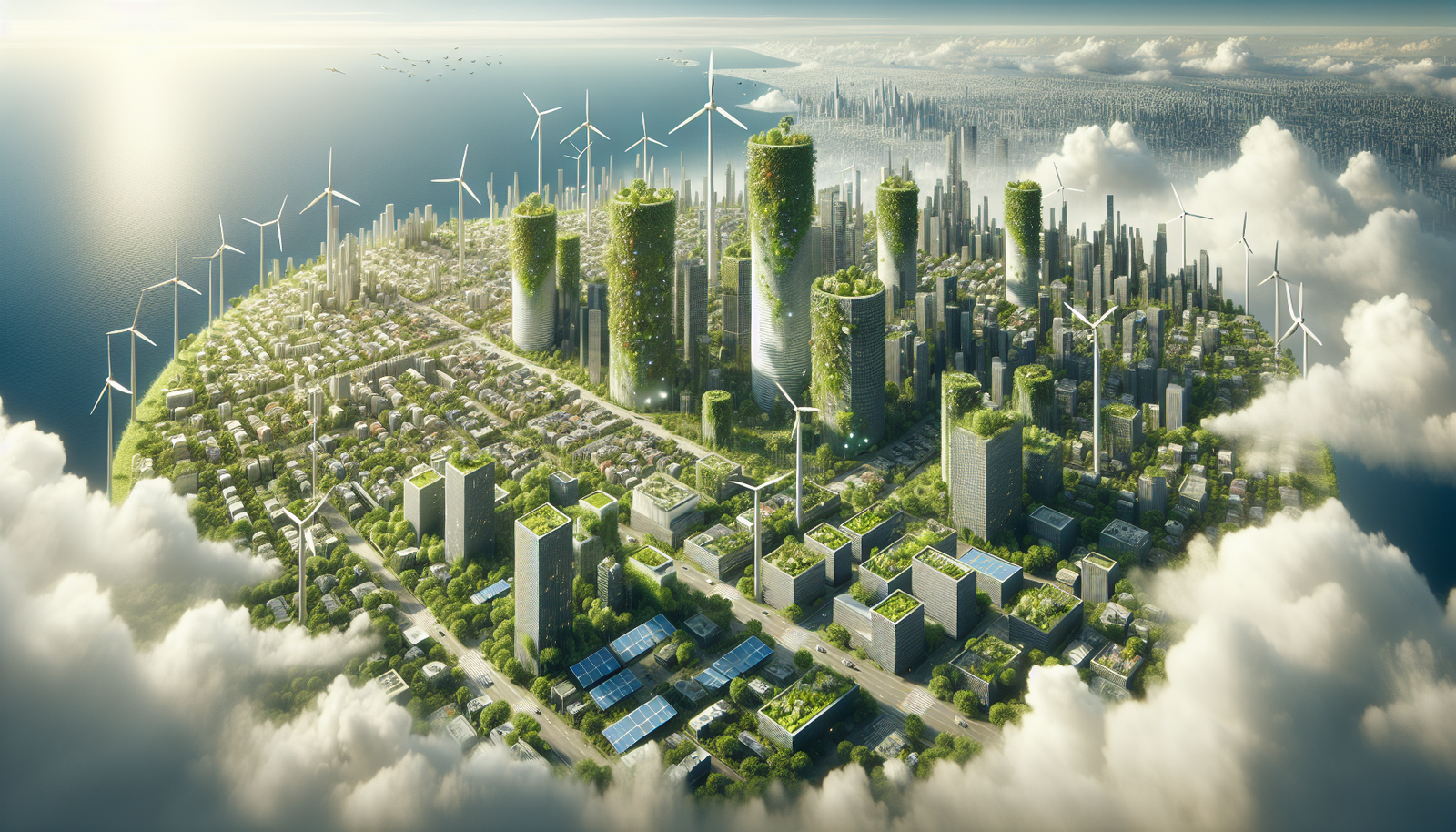Defining Sustainability
Sustainability is often perceived as a buzzword, yet its implications are profound and far-reaching. At its core, sustainability refers to the capacity to maintain or improve systems and processes without depleting the natural resources or causing harm to the environment for future generations. It encompasses a holistic approach that integrates environmental, economic, and social dimensions, often referred to as the three pillars of sustainability.
To comprehend the significance of sustainability, it is essential to delve into its three foundational pillars:
- Environmental Sustainability: This pillar focuses on conserving natural resources and protecting global ecosystems to support health and wellbeing, now and in the future. It involves practices such as reducing carbon footprints, enhancing biodiversity, and minimizing waste.
- Economic Sustainability: It seeks to promote economic growth while ensuring that the resources used in production are not depleted. Economic sustainability aims for long-term profitability without compromising the environmental or social factors.
- Social Sustainability: This aspect emphasizes maintaining and improving social quality with concepts like equity, diversity, social cohesion, and quality of life. It ensures that human rights and labor rights are respected, and communities are involved in the development processes.
The integration of these pillars can be visualized in the following table, which outlines the key components of each sustainability aspect:
| Aspect | Key Components |
|---|---|
| Environmental | Resource conservation, ecosystem protection, waste reduction |
| Economic | Long-term profitability, resource efficiency, innovation |
| Social | Equity, diversity, community involvement, quality of life |
By understanding these fundamental components, stakeholders across various sectors can implement strategies that foster sustainability. The challenge lies in balancing these elements to meet current needs without compromising the ability of future generations to meet theirs. As the world faces pressing environmental and social challenges, the pursuit of sustainability becomes not just a goal but a necessity.
The Three Pillars of Sustainability
The concept of sustainability is often encapsulated in the framework known as the three pillars of sustainability: environmental, economic, and social. Each pillar represents a critical aspect of sustainable development, and together, they form a holistic approach to maintaining balance in our ecosystems, economies, and communities.
Environmental Sustainability focuses on the preservation and protection of natural resources. It emphasizes reducing pollution, conserving biodiversity, and managing natural resources responsibly to ensure that ecosystems remain resilient and productive for future generations. Practices such as recycling, renewable energy utilization, and sustainable agriculture are key components of this pillar.
Economic Sustainability involves creating systems that provide economic value while not compromising environmental or social aspects. It seeks to foster growth and development that can be maintained over the long term without depleting natural resources. This includes investing in green technologies, promoting fair trade, and ensuring that businesses operate in a manner that is both profitable and environmentally conscious.
Social Sustainability emphasizes the importance of social equity, inclusivity, and community development. It focuses on improving quality of life, reducing poverty and inequality, and ensuring that all individuals have access to basic needs and opportunities. This pillar encourages practices that promote diversity, education, and health care, recognizing that societal well-being is integral to sustainable progress.
| Pillar | Key Components | Examples |
|---|---|---|
| Environmental |
|
|
| Economic |
|
|
| Social |
|
|
Environmental Sustainability
Environmental sustainability refers to the responsible interaction with the environment to avoid depletion or degradation of natural resources and allow for long-term environmental quality. The concept emphasizes the need to preserve the natural world to support life for both current and future generations. This involves a balance between economic growth, environmental health, and social well-being, ensuring that the planet can maintain its ecosystems and biodiversity.
One of the primary components of environmental sustainability is the effective management of natural resources. This includes the sustainable extraction and use of resources such as water, minerals, and forests. Implementing sustainable practices can help reduce waste and lower the carbon footprint. For example, promoting renewable energy sources like solar and wind power is essential in reducing dependency on fossil fuels. Additionally, recycling and reusing materials contribute to the conservation of resources.
| Area | Strategies |
|---|---|
| Energy |
|
| Water |
|
| Waste |
|
Environmental sustainability also involves addressing the challenges posed by climate change. This includes efforts to reduce greenhouse gas emissions through innovative technologies and policy measures. It is crucial for governments, businesses, and individuals to work collaboratively to mitigate the impacts of climate change by adopting sustainable practices.
Overall, the journey towards environmental sustainability requires a profound transformation in how society operates. It calls for a shift in mindset from short-term gains to long-term planetary health, ensuring that the needs of the present are met without compromising the ability of future generations to meet their own needs.
Economic Sustainability
Economic sustainability is a crucial pillar of the broader concept of sustainability, focusing on the ability of an economy to support a defined level of economic production indefinitely. It emphasizes the efficient use of resources to create long-term economic value, ensuring that economic growth does not come at the expense of environmental degradation or social inequality. This involves balancing current economic needs with the future economic opportunities, which requires strategic planning and responsible resource management.
One of the key aspects of economic sustainability is the transition to green economies. This involves shifting towards economic systems that prioritize renewable energy sources, sustainable agriculture, and resource-efficient manufacturing processes. The aim is to reduce carbon footprints and minimize waste, while still fostering economic growth and job creation. Economic sustainability also supports innovation and technology that promote resource efficiency and environmental stewardship.
Another critical component is corporate responsibility. Businesses play a significant role in economic sustainability by adopting practices that reduce environmental impact and enhance social welfare. This includes implementing sustainable supply chains, investing in eco-friendly technologies, and ensuring fair labor practices. Economic sustainability at the corporate level is often measured by metrics such as carbon footprint reduction, energy efficiency, and sustainable product development.
To illustrate the different elements of economic sustainability, consider the following table:
| Element | Description |
|---|---|
| Resource Efficiency | Optimizing the use of natural resources to minimize waste and reduce environmental impact. |
| Renewable Energy | Transitioning to energy sources that are sustainable and have a lower environmental impact. |
| Corporate Responsibility | Adopting business practices that prioritize environmental and social well-being. |
Social Sustainability
Social sustainability is a crucial component of the broader sustainability framework, emphasizing the importance of maintaining and improving social quality with concepts like equity, diversity, interconnection, quality of life, democracy, and social cohesion. It seeks to foster a healthy society by ensuring that individuals and communities have access to the resources and opportunities necessary for their well-being. This pillar of sustainability focuses on the human dimension, addressing the needs and rights of all people, particularly the most vulnerable groups.
One of the core aspects of social sustainability is equity. Ensuring fair access to resources and opportunities is vital for reducing disparities within and between communities. This involves creating systems and structures that promote equal opportunities for education, healthcare, and employment. It also includes addressing issues such as income inequality, which remains a significant challenge globally. For instance, according to the World Inequality Report, the top 10% of the global population earns 52% of the income, highlighting the disparities that need to be addressed.
Another essential element is promoting social cohesion and community engagement. Strong, cohesive communities are the backbone of a sustainable society. This can be achieved through policies and initiatives that encourage participation, foster a sense of belonging, and build trust among community members. Governments and organizations can support social sustainability by investing in social infrastructure such as community centers, public spaces, and transportation networks that enhance connectivity and inclusivity.
In the context of sustainable development, future directions for social sustainability involve embracing innovative approaches and technologies. For example, leveraging digital platforms to enhance communication and participation can play a significant role in building socially sustainable communities. Furthermore, integrating social sustainability metrics into corporate and governmental decision-making processes ensures that social factors are considered alongside economic and environmental ones, paving the way for holistic and sustainable growth.
Sustainability in Business
Sustainability in business refers to the incorporation of environmental, social, and economic considerations into company operations and strategies. Businesses today are increasingly recognizing the importance of sustainable practices as they not only help in reducing the ecological footprint but also enhance brand reputation and ensure long-term viability. A sustainable business model aims to create value for all stakeholders, including employees, customers, and the wider community, while minimizing negative impacts on the planet.
One of the key components of sustainability in business is the adoption of the triple bottom line approach, which emphasizes the importance of balancing profit with people and the planet. This approach encourages companies to go beyond traditional financial metrics and assess their performance based on social and environmental criteria as well. Here is a simple representation of the triple bottom line:
| Profit | People | Planet |
|---|---|---|
| Economic growth | Social responsibility | Environmental stewardship |
Many companies are setting ambitious sustainability goals, such as reducing carbon emissions, minimizing waste, and sourcing materials responsibly. For instance, some businesses have committed to achieving net-zero emissions by a specific year, while others are focusing on improving supply chain transparency and ensuring fair labor practices. These initiatives not only contribute to environmental conservation but can also lead to cost savings and operational efficiencies.
The challenges of integrating sustainable practices into business operations can be significant, especially for industries with traditionally high environmental impacts. However, innovation and technology are playing a crucial role in overcoming these challenges. By investing in renewable energy, optimizing resource use, and leveraging data analytics, businesses can enhance their sustainability efforts and drive positive change.
Sustainable Agriculture
Sustainable agriculture is a critical component of the broader concept of sustainability, focusing on the long-term viability of farming practices that meet current food needs without compromising future generations’ ability to do the same. This approach integrates three main pillars: environmental health, economic profitability, and social equity. By prioritizing these aspects, sustainable agriculture aims to balance the demands for food production with the need for ecosystem conservation.
One key element of sustainable agriculture is the reduction of chemical inputs. This includes minimizing the use of synthetic fertilizers and pesticides, which can harm soil health and biodiversity. Instead, sustainable practices encourage the use of organic fertilizers, crop rotation, and integrated pest management. These methods not only help maintain soil fertility but also enhance the resilience of crops against pests and diseases.
Another crucial aspect is water management. Agriculture is a major consumer of freshwater resources, and efficient water use is essential for sustainability. Techniques such as drip irrigation and rainwater harvesting are employed to optimize water usage and reduce waste. Additionally, the implementation of drought-resistant crop varieties can further contribute to water conservation efforts.
To illustrate the benefits of sustainable agriculture, consider the following data on yield improvements and resource efficiency:
| Practice | Yield Increase | Water Efficiency |
|---|---|---|
| Organic Fertilizers | 20% | 15% more efficient |
| Crop Rotation | 30% | 10% more efficient |
| Drip Irrigation | 25% | 50% more efficient |
These practices not only improve yields but also enhance the sustainability of agricultural systems, ensuring that farming remains viable and productive for future generations.
Renewable Energy and Sustainability
Renewable energy plays a crucial role in advancing sustainability, offering a cleaner alternative to traditional fossil fuels. It encompasses a variety of sources such as solar, wind, hydroelectric, and geothermal energy, each contributing uniquely to reducing carbon emissions and promoting environmental health. By harnessing these natural resources, we can significantly decrease our reliance on non-renewable energy sources, thereby reducing our carbon footprint and mitigating the effects of climate change.
The transition to renewable energy is supported by numerous benefits that underline its importance in sustainability. Below are some key advantages:
- Reduction in greenhouse gas emissions
- Decrease in air and water pollution
- Job creation in the renewable energy sector
- Long-term energy price stability
Despite these benefits, the shift towards renewable energy faces several challenges. These include technological limitations, high initial costs, and the need for substantial infrastructure development. However, with ongoing research and investment, these barriers are gradually being overcome, paving the way for a more sustainable energy future.
| Renewable Source | Global Share (%) | Growth Rate (%) |
|---|---|---|
| Solar | 3.3 | 22.0 |
| Wind | 5.9 | 10.0 |
| Hydroelectric | 16.6 | 2.0 |
| Geothermal | 0.5 | 4.0 |
In conclusion, renewable energy is not just an alternative but a necessity for sustainable development. As we continue to innovate and invest in this sector, we move closer to achieving a balanced and sustainable future for generations to come.
Sustainable Urban Development
Sustainable urban development refers to the creation and management of urban spaces that are environmentally, economically, and socially sustainable. This approach aims to balance the needs of the present without compromising the ability of future generations to meet their own needs. In recent years, cities around the world have been adopting sustainable practices to address challenges such as population growth, pollution, and resource depletion.
One of the key components of sustainable urban development is the integration of green infrastructure. This includes the establishment of parks, green roofs, and other natural spaces that help reduce urban heat, improve air quality, and manage stormwater. Additionally, cities are investing in sustainable transportation systems, such as public transit, biking lanes, and pedestrian-friendly pathways, to reduce reliance on fossil fuels and decrease carbon emissions.
| City | Green Space (%) | Public Transit Usage (%) | Bike Lanes (km) |
|---|---|---|---|
| Amsterdam | 12 | 40 | 513 |
| Singapore | 47 | 52 | 230 |
| New York | 27 | 55 | 1,200 |
Moreover, sustainable urban development emphasizes the importance of resilient infrastructure. This includes buildings designed with energy efficiency in mind, using renewable energy sources such as solar and wind power. Cities like Amsterdam, Singapore, and New York have become leaders in implementing these sustainable practices, as illustrated in the table above.
Efforts to promote sustainable urban development also involve community engagement and education. Encouraging citizens to participate in sustainable practices, such as recycling and conservation, plays a vital role in fostering a culture of sustainability. As urban areas continue to grow, the success of sustainable urban development will heavily rely on collaborative efforts between governments, businesses, and communities.
The Role of Technology in Sustainability
Technology plays a pivotal role in advancing sustainability, acting as both a tool and a catalyst for change. As the world grapples with environmental challenges, technological innovations offer promising solutions to reduce carbon footprints and optimize resource use. From renewable energy systems to advanced waste management, technology drives efficiency and sustainability in various sectors.
One of the most significant contributions of technology is in the energy sector. The development of solar panels and wind turbines has revolutionized renewable energy, making it more accessible and affordable. Furthermore, smart grids and energy storage technologies ensure a more efficient distribution and utilization of energy.
- Smart Grids: Enable real-time monitoring and management of energy flow.
- Energy Storage: Facilitates the integration of renewable energy sources.
- Solar Panels: Reduce dependency on fossil fuels.
In addition to energy, technology also enhances sustainability in agriculture through precision farming techniques. These technologies allow farmers to use resources like water and fertilizers more efficiently, significantly reducing waste and environmental impact.
| Technology | Application | Impact |
|---|---|---|
| Precision Farming | Agriculture | Reduces resource use and increases yield. |
| Smart Grids | Energy | Improves energy distribution efficiency. |
| Waste Management Systems | Urban Areas | Enhances recycling and reduces landfill use. |
Despite these advancements, the integration of technology in sustainability faces several challenges. High initial costs, technological complexity, and the need for skilled personnel can hinder the widespread adoption of sustainable technologies. However, ongoing research and development continue to lower these barriers, paving the way for a more sustainable future.
Challenges and Barriers to Sustainability
Despite the growing awareness and commitment to sustainability, numerous challenges and barriers hinder its full realization. One of the primary obstacles is the economic cost associated with transitioning to sustainable practices. Initial investments in sustainable technologies and infrastructures can be prohibitive for many businesses and governments, particularly in developing regions. Additionally, there is often a lack of financial incentives or subsidies to encourage the adoption of sustainable practices.
Another significant barrier is the complexity of measuring sustainability. The absence of universal metrics and standards makes it difficult for organizations to assess their sustainability efforts accurately. This lack of standardization can lead to greenwashing, where companies falsely claim to be environmentally friendly without implementing meaningful changes. Furthermore, there is often insufficient data to track progress effectively, which hampers accountability and transparency.
Social and cultural resistance also pose challenges to sustainability. Many communities and individuals may be resistant to change due to traditional practices or a lack of awareness about the benefits of sustainability. This resistance can be exacerbated by political factors, where policy changes are slow to implement or lack enforcement. Moreover, there is often a disparity in the distribution of resources and opportunities, leading to inequality and hindering cohesive efforts towards sustainable development.
Technological limitations and resource scarcity further complicate the pursuit of sustainability. While innovations are continually being developed, the pace of technological advancement is sometimes insufficient to meet the urgent demands for sustainable solutions. Additionally, the finite availability of natural resources necessitates careful management and conservation efforts, which are often challenging to implement on a global scale. Addressing these barriers requires a collaborative approach that involves governments, businesses, and communities working together towards common sustainability goals.
| Barrier | Description |
|---|---|
| Economic Costs | High initial investments in sustainable technologies and infrastructures. |
| Measuring Sustainability | Lack of universal metrics and standards; risk of greenwashing. |
| Social Resistance | Resistance due to traditional practices and political factors. |
| Technological Limitations | Pace of innovation insufficient to meet demands; resource scarcity. |
The Future of Sustainability
The future of sustainability is poised to be shaped by several emerging trends and technologies that promise to redefine how we interact with our environment and resources. Advancements in technology such as artificial intelligence and the Internet of Things are enabling more efficient resource management and energy consumption. These technologies facilitate real-time data analysis, allowing for smarter decision-making and optimization of systems to reduce waste and emissions. Additionally, the growing trend of circular economy practices emphasizes the reuse and recycling of materials, minimizing the need for new resource extraction.
In the realm of energy, a significant shift is occurring towards renewable energy sources. Solar, wind, and hydroelectric power are becoming more accessible and cost-effective, offering viable alternatives to fossil fuels. The transition to renewables is supported by government policies and international agreements aimed at reducing carbon footprints. This shift not only addresses environmental concerns but also opens up economic opportunities in green jobs and innovations. The table below highlights the projected growth of renewable energy sources over the next decade:
| Year | Solar (GW) | Wind (GW) | Hydro (GW) |
|---|---|---|---|
| 2025 | 600 | 800 | 1200 |
| 2030 | 1000 | 1200 | 1400 |
Social awareness and consumer behavior are also pivotal in shaping the future of sustainability. As consumers become more informed about the environmental impact of their choices, there is a growing demand for eco-friendly products and sustainable business practices. Companies are responding by adopting more sustainable supply chains and transparent reporting on their environmental impact. The following list outlines key areas where consumer influence is driving change:
- Demand for sustainable packaging
- Preference for ethical and locally sourced products
- Support for companies with strong environmental policies
Ultimately, the future of sustainability depends on the collaboration between governments, businesses, and individuals to foster an environment where sustainable practices are prioritized. As challenges such as climate change and resource scarcity continue to escalate, innovative solutions and collective action will be essential in paving the way toward a more sustainable and resilient future.



